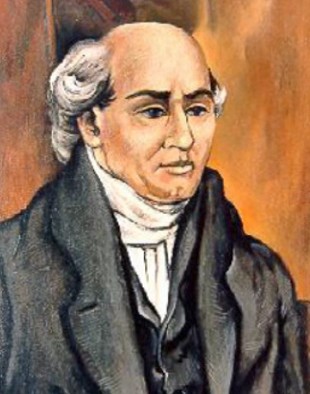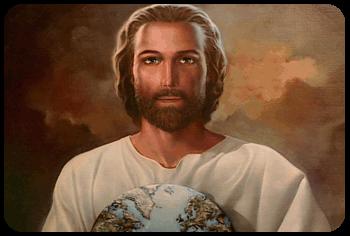|
**List: Hindi Ministry
Bible ( बाइबिल, Dharm Shastra {Religious
Scripture} )
Hindi...
"Hindi is spoken, with some degree of dialectal
variation, by an
estimated 200 million, or 35 per cent of the inhabitants of
India.
It has been proposed as the official Indian language, and attempts
have been made to institute its use in all interstate communi-
cations.
In the past, considerable confusion has arisen because of the use
of the term ‘Hindi’ to denote both a literary language and a
language group. Thus ‘High Hindi’ refers to the literary
language, while ‘Hindi’ has been used to refer to a number of
vernacular tongues spoken from Bengal to the Punjab, including
primarily, Eastern Hindi:
Awadhi,
Bagheli,
Chhattisgarhi,
and possibly
Bihari; and Western Hindi:
Braj Bhasha,
Kanauji,
and possibly
Rajasthani and
Pahari.
In this book ‘Hindi’ is used in its limited sense to designate
the
Western Hindi literary language, a non-Persianized form of
Hindustani (q.v.) which has come into use as the
prose literary
language of northern India. This ‘High Hindi’ is a
relatively
modern linguistic invention and owes a good deal of its wide
use to British influence, beginning
about 1800. Prior to this
time, Hindu prose was written
in the regional dialect of each
writer.
The interesting literary history of Hindi is usually traced to a
work by Lallu Lal (supported by Dr. Gilchrist), written in the
late 18th century in the usage of the Upper Doab area. In an
idiom largely free of Urdu influence and
employing a vocabulary
and grammar more or less common to closely related languages
of northern India, it provided the basis for the standard literary
usage designated as Hindi. As a literary vehicle it is now well
established and spreading in use with broadening education
and wider use in the mass media.
The folk migrations and invasions that formed the Indian
ethnological and linguistic mixture are well attested historically.
Four language families are represented in the hundreds of
languages of India. The first migrants to arrive (possibly except-
ing the Negroid Andamans) were the Austric people, repre-
sented today by about 6 million speakers of the
Khasi, Munda
(see Mundari), and
Nicobarese languages. During
the fourth
millennium B.C. the Dravidians entered India - the forebears of
the more than 90 million speakers of the Dravidic (see
Tamil)
tongues. Before 1000 B.C. the Aryans had arrived and settled
throughout northern and central India. The descendant languages
of their Indo-European tongues are now spoken by more than
300 million people in the broadly variant Dardic (see
Shina),
Persian (see
Balochi), and Indo-Aryan (see
Sanskrit) languages.
The other major group are the Sinto Tibetan, represented now by
the almost 5 million speakers of the
Tibetan
(Lahuli), North
Assam (see
Daphla), and Assam-Burmese (see
Manipuri)
languages.
The Asian subcontinent, upon which this linguistic overlay is
placed, has historically passed from regional rule by numerous
autonomous kingdoms, to unity, with domination by the Delhi
Sultanate (c. 1200), and later the Mogul
Empire (1526-1757)
and the British (1757-1948). In 1947
Pakistan and India were
divided; two years later (1949) the Republic of India was born.
The Devanagari script, a semi-syllabic system, with 48 signs
developed from Gupta character, is discussed under Sanskrit." --1000
Tongues, 1972 [Info only]
|
**File: Hindi Bible History (3)--1860 S.
Bagster [Info only: Hinduwee.]
Devanagari Character unless noted
"1806 Gospels Calcutta
Translated by Henry T.[homas] Colebrooke, the first European Sanskrit
scholar."--1000 Tongues, 1972 [Info only]
|
"1811 New Testament 1812
Pentateuch
1816 Job-Song of Solomon 1818 Joshua-Esther
Isaiah-Malachi New Testament (revised)
1821 Gospels (new translation) 1823 Gospels (Kaithi
character) 1824 Gospels (revised) Serampore MP
All translated and revised by the Serampore mies., under William
Carey, J. Chamberlain, and J. T.
Thompson. The language was
known as Hindoostanee, Hindui, or Hindee."--1000 Tongues,
1972 [Info only]
|
"Bible, BFBS, Calcutta,
1836; tr. by William Bowley of the CMS,
whose translation of the New Testament had
been published in 1826. Parts of Bowley’s
version were separately printed in Kaithi characters."--1000
Tongues, 1939 [Info only:
pro-KJV.]
|
"1826 New Testament Gospels
(Kaithi character)
1835 Bible 1845-1846 Genesis Exodus
Psalms
Proverbs New Testament (Kaithi character)
Calcutta Auxiliary BS
Adapted from the Urdu version by W.
Bowley, Church MS, and
transliterated."--1000 Tongues, 1972 [Info only:
KAITHI CHARACTER "1846" Mark 1:2 unknown.]
|
"1848 New Testament
1850 New Testament (Kaithi character) Bible Translation
Society, Calcutta
Translated by W. Yates and A. Leslie, Baptist MS."--1000
Tongues, 1972 [Info only]
|
"Owen version: New
Testament,
BFBS, All_habad, 1849, revised by a committee formed by the North
India Auxiliary Bible Society; Old Testament part 1, 1852; edited by
Joseph Owen, revised and completed, 1855; New Testament revised 1860
by J. F. Ullmann."--1000 Tongues, 1939 [Info only]
|
"1849 New Testament 1852-1855
Old Testament (in 2 parts)
North India Auxiliary BS, All_habad
Edited by committees under the direction of Joseph Owen, American
Presbyterian Mission, and F. E. Schneider, CMS."--1000 Tongues,
1972 [Info only]
|
"1860 New Testament BFBS, London
A slightly revised edition, prepared by J. F. Ullman, APM, on the
basis of the 1849 N.T."--1000 Tongues, 1972 [Info only]
|
"1866-1869 Old Testament (in 2 parts)
North India Auxiliary BS, All_habad
A revision of the 1852-1855 O.T., prepared by J. Owen."--1000
Tongues, 1972 [Info only]
|
"1868 New Testament Baptist MP, Calcutta
1879 New Testament (Roman character) ABS, Lucknow
1879 Matthew (Kaithi-Pothi character) Calcutta Auxiliary BS
Translated by J. Parsons, BMS, assisted by J.
Christian. Pothi
printing is arranged lengthwise on the page."--1000 Tongues, 1972
[Info only]
|
"1888-1889 Gospels Acts
North India Auxiliary BS,
All_habad
Translated by a committee under the direction of J. F.
Holcomb."--1000 Tongues, 1972 [Info only]
|
HINDI--1000 Tongues, 1972 [Info only: Roman Character "1897"
Mark 1:2 correct (prophets).]
"1899 Genesis Exodus 1901
Psalms
1902 Old Testament (tentative) 1905 Old Testament
North India Auxiliary BS, All_habad
Translated by W. Hooper, CMS, S. H. Kellogg, APM, and
J. A. Lambert, London MS. This version remains in use, employing
the Parsons N.T. with the 1888-1889 Gospels
and Acts, and the
Hooper-Kellogg-Lambert O.T."--1000 Tongues, 1972 [Info
only:
"Bible revised 1905 by a committee"
per 1939.]
|
"Cur. text: Old Testament,
1914; prepared by
W. Hooper, E. Greaves, G. W. Brown, G. J. Dann, and Prem Ohard;
New Testament, 1920; prepared by Mr. Dann, J. Fraser Campbell,
Bal Mukand and L. P. Singho."--1000 Tongues, 1939 [Info
only]
|
HIGH HINDI--1000 Tongues, 1939 [Info only: Devanagari characters
"1936" John 3:3-28 unknown.]
HIGH HINDI--1000 Tongues, 1939 [Info only: Kaithi characters
n.d. Book ch:v unknown.]
HIGH HINDI--1000 Tongues, 1939 [Info only: Roman characters
n.d. John 3:16 unknown.]
"1942? Luke Printed privately
A translation into Simple Hindi, prepared by J. H. Lawrence."--
1000 Tongues, 1972 [Info only]
|
"1956 Mark 1959 John
1961 Gospels Acts
BS of India and Ceylon, Bangalore
1967 New Testament BS of India, Bangalore
A revision prepared by a committee, consisting of Yisudas D. Tiwari,
C. S. Thorburn, R. M. Clark, Philip John, G. C. Khanna, and
Herbert J. Singh."--1000 Tongues, 1972 [Info only]
|
*printed Book: Hindi Bible (1962) Bible Society of India and
Ceylon, Bangalore [Info only:
1000 Tongues, 1972 reports this as Hindi w/ Devanagari character.
Mark 1:2 incorrect; Has Acts 8:37 & 1 John 5:7.]
HINDI--1000 Tongues, 1972 [Info only: DEVANAGARI CHARACTER
"1966" Mark 1:2 incorrect (Isaiah).]
**List: Hindustani Ministry
|


